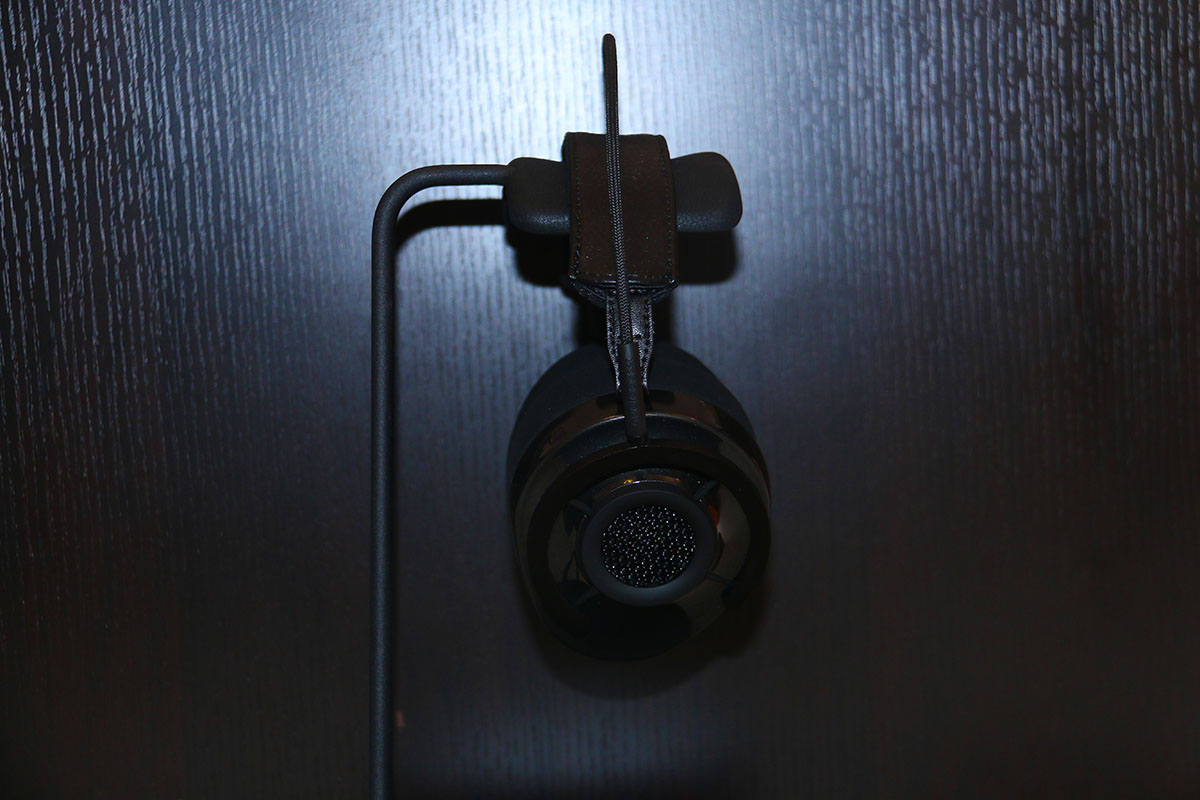
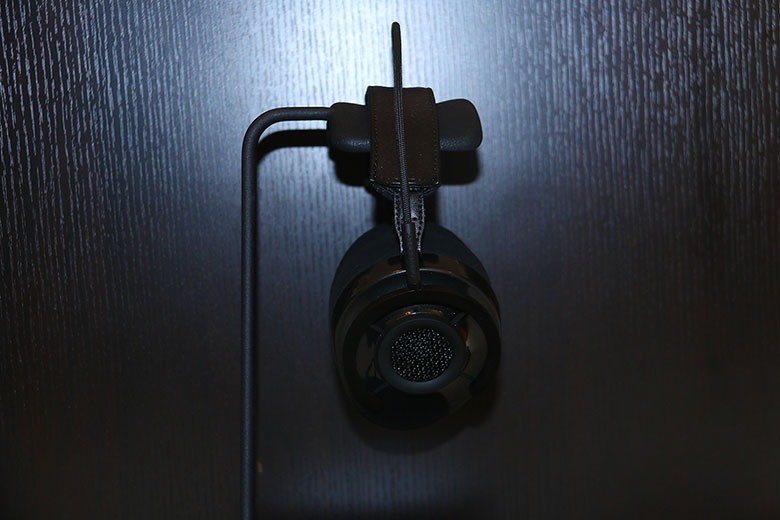
The Master Switch


The Master Switch
Get ‘em while you can. AudioQuest recently announced they’re getting out of the headphones game, which is a real shame. For our money, they produced several of the coolest headphones ever made, including the subject of this review: the NightHawk Carbons. These cans are still very much available, and we think it’s worth going into why they’re so damn good. In this review, we break down the sound, design, comfort and fit, packaging and accessories, and specs of the NightHawk Carbon. To see how it stacks up, see our list of the best high-end headphones.
AudioQuest, unsurprisingly, know their audio. For a pair of headphones that costs around $700, the NightHawk Carbons are very good indeed. You can hear this particularly in the low-end. The bass of the Carbons is their real draw - while they’re definitely an acquired taste, they do have plenty to offer. Bass notes and kick drums are huge and powerful, even overbearing at times, but we found that the sound signature was one we mostly enjoyed. It definitely suits genres like hip-hop and dubstep more than it does, say, classical. If you don’t enjoy dark, bassy headphones, then you may want to steer clear of these.
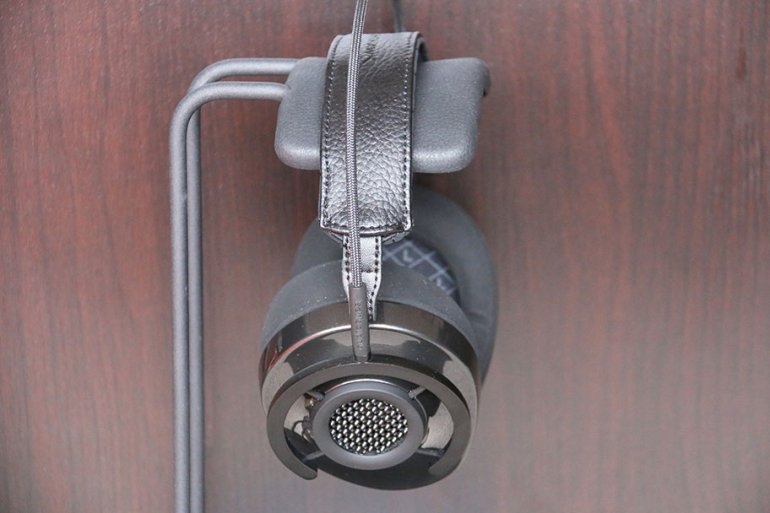
If there’s one area the headphones really suffer in, it’s here. Not to the extent of being a poor product - they are anything but. And the diminished high-end definitely feels like a deliberate choice, more than an oversight. It’s not that it lacks detail: it’s just nowhere near as forward as the bass, meaning that it can often be a little tricky to discern the upper ranges of any particular track. If you were to match this up with, for example, a pair of Grado SR325es (full review here), you would have a vastly different experience.
However, like the Grados, there were a couple of issues with bleed, the sound leaking out of the grille while we were listening to music, but it was a minor problem – something you have to be in relatively close proximity to the headphones to notice. In the instruction leaflet, AudioQuest advise a burn-in time of 150 hours for the headphones to reach their full potential. We listened to them for around this length of time, and didn’t detect a huge change in sound quality, but it’s not as if listening to them was a hardship, and it’s not as if the sound wasn’t spectacular to begin with. It had almost zero distortion from the get-go.
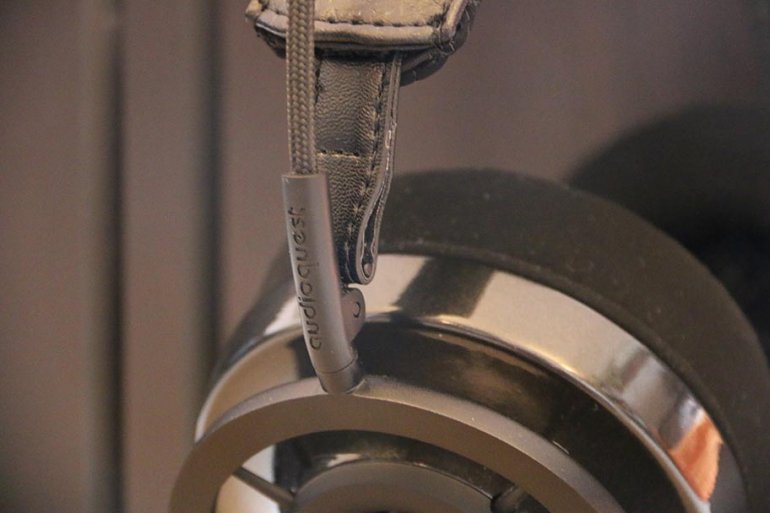
The Carbons are surprisingly easy to drive. With an impedance of 25 ohms and a sensitivity of 99dB, these can quite comfortably be driven by a smartphone. We spent quite a bit of time listening to them on our smartphone, and the sound was…good. Even great, at times. It felt clear, dynamic and natural, with a good range of expression. Then again, these aren’t exactly portable headphones – not unless you enjoy Uber drivers asking you what on earth you’re wearing on your head – and that’s hardly the point anyway. Plug these into a decent amplifier, and they absolutely sing. For whatever reason, the NightHawk Carbons respond particularly well to amplification, more so than other headphones. On neutral-sounding amps, the NightHawk Carbons have a clear, sharp, detailed quality to them – hardly surprising, given their open-back design, but it’s got a quality to it that we found completely addictive. Even at low levels, we were able to hear every single detail on a track, and the soundstage took our breath away. Part of this, we think, is down to the butterfly-mimicking grille (more about that in a minute), which AudioQuest claim actually diffuses sound, stopping it being reflected back into the ear. It works brilliantly, and it was a real joy to try out different genres and artists with these cans, seeing how they responded.
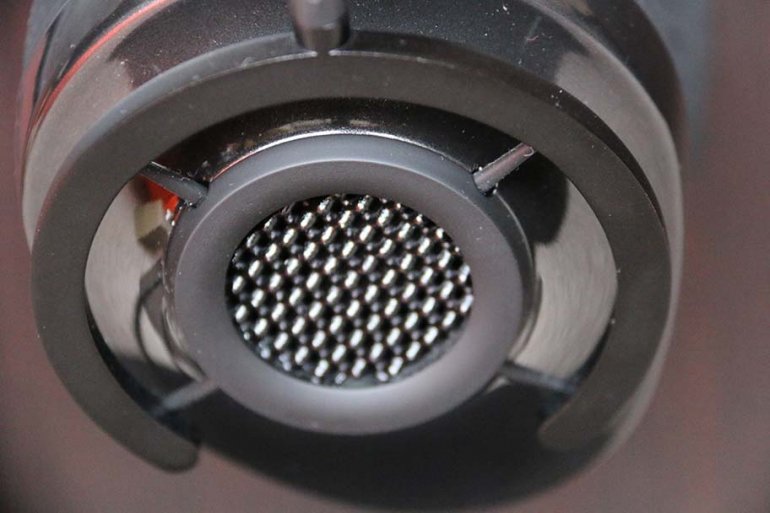
When we added some tube goodness to the mix, we got the best of both worlds: the warm, gooey quality of the tubes, with that outstanding clarity and crispness. There is a truly staggering level of science and thought that has gone into the headphones’ 50mm driver units, and it shows: we never lacked for bass, or tight dynamics. It helps that you can switch out the earpads to customise the sound; the protein leather pads gave us better isolation and slightly more detail in the highs, while the suede pads sacrificed the former to add in a better bass response.
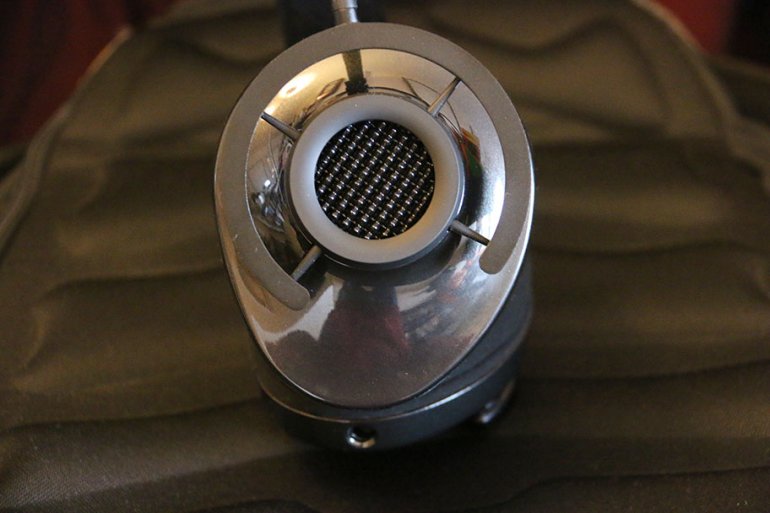
3D printing. Biomimicry. Liquid wood. Biocellulose. We don’t want to spend too much time talking about the wealth of technologies that AudioQuest used to create these headphones. Let’s just say that paging through the glossy brochure that comes with them is eyebrow-raising, to say the least. Rarely has an audio manufacturer shown this much dedication to pushing the boundaries of what you can do with a pair of headphones, and although we didn’t rip them open to check if the grille really is inspired by the structure of butterfly wings, we can certainly say that the design is unlike anything we’ve seen before (unless you’re counting the manufacturer’s previous models like the open-back NightHawk, which is a direct predecessor of this one, and there’s also a closed-back NightOwl Carbon model). Even the damn name makes a statement. It sounds like a car you’d unlock in Forza Horizons on XBox. Or an optional boss battle in Titanfall 2. One that flies and shoots lasers and has a rocket attack that takes out half your health bar.
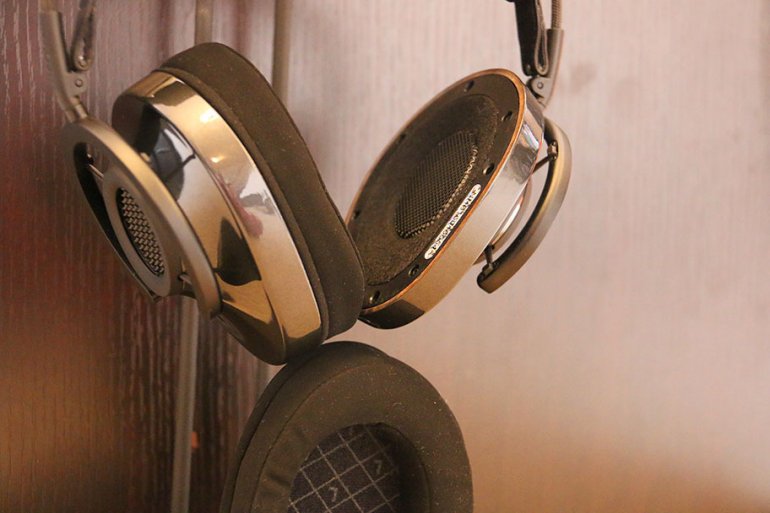
These are, essentially, semi-open-back headphones: the unique grille diffuses the sound coming from the drivers, and it results in an eye-catching exterior design. The grille on each cup is suspended in a semicircular chunk of plastic, and the entire cup is made of the aforementioned liquid wood, which feels smooth and robust. These are not headphones you wear without your friends, colleagues or spouse doing a double take - although there are plenty of other headphones that you could say the same thing about.
Each ear cup is clearly marked with left and right indicators, and you can swap out the pads for different material, which we’ll breakdown in a little more detail below. The pads pop right off with a firm snap, and swapping them out is simplicity itself. They also aren’t completely symmetrical, moulded to fit the shape of the ear. Each cup housing also has its own headphone connector. The headband is interesting, too. Instead of relying on manual adjustment, the leather and fabric headband is elasticised, adjusting to the shape of your head. It’s an approach that we’ve seen on several other headphone models, like the MEZE 99 Classics (full review here), and it’s one we really like. Above the headband is a length of rigid wire, designed to hold everything together.
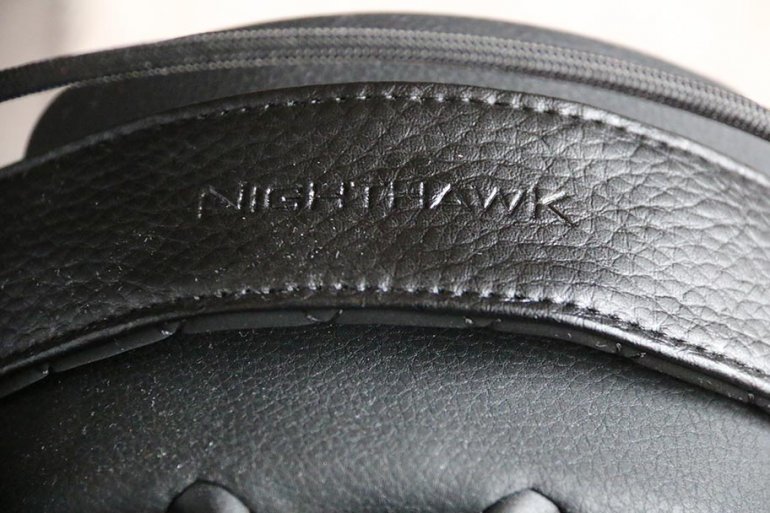
You could argue that these headphones lose a little bit of the high-end lustre, as several parts of them are plastic or simple fabric. And to be sure, they don’t adhere to the all-metal, all-leather aesthetic of something like the Bowers & Wilkins P7 Wireless (full review). To which our response is: so what? When there’s so much innovative design going on behind the scenes, it seems churlish to demand certain materials appear simply because they have a high-end reputation and look. If this really was the case, then every pair of Stax electrostatic headphones would need to be upholstered in marble to get a look-in – and these are headphones that are revered by audiophiles while looking like something an alien would use to turn human brains to mush. No, the design of the NightHawk Carbons is superb: bold, eye-catching, innovative, and more importantly, fun. They are a joy to look at.
One thing – and this is a genuine downside. While these headphones work perfectly well off a mobile device, they are absolutely not portable. For one thing, they are huge, and for another, we’re not sure that we’d want to risk these in the chaos of a backpack, whether they’re in a carry case or not. AudioQuest do offer a full year’s warranty, but you might want to leave these headphones at home. Preferably close to your leather couch. And collection of fine single malts. If you’d like a pair of over-ear headphones that are a little more portable, try the Sennheiser HD600.
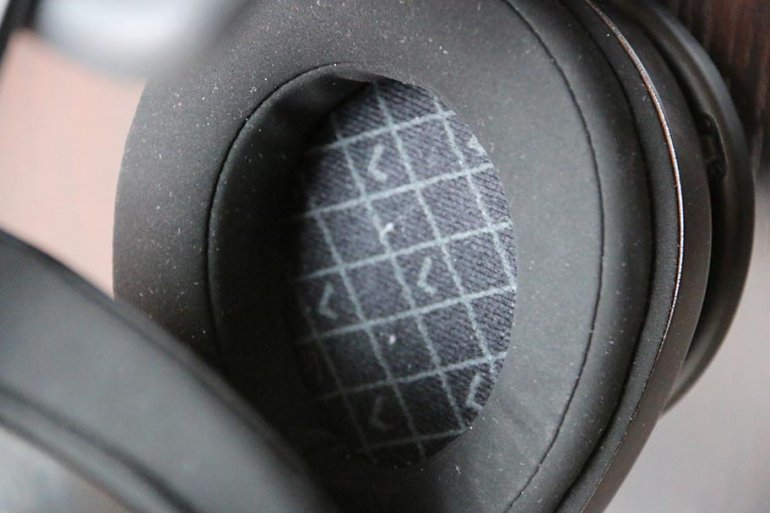
It’s all about the pads. You get two pairs of them: one made of protein leather, the other made of suede. They both impact the sound differently. What’s important is that they feel superb: both of them, and although we preferred the suede pads for reasons of audio quality as well as comfort, both kinds were an absolute joy to use. It helps that they aren’t symmetrical, as we mentioned earlier, meaning they fit snugly around the ear. Even when wearing glasses, it didn’t feel like the headphones were being pushed away from the head. Other headphones, like the Advanced Sound Alpha, come with additional pads, but very rarely does it make a difference like it does here.
Although the NightHawk Carbons aren’t particularly light (12.2oz), they are immensely comfortable to wear for long periods. It’s not just that the stretchy headband is perfectly accommodating to any size and shape of skull. It’s that the clamping pressure from the cans feels natural, neither too loose nor too tight, clasping the head without crushing it. The design qualities of these cans would mean nothing if they felt uncomfortable - and when we first saw the design, we were a little worried. Cool it might be, but so is a Lamborghini Gallardo, and that has seats that more or less declare war on your ass cheeks. Not a problem here. The comfort level of the Carbons is superb.
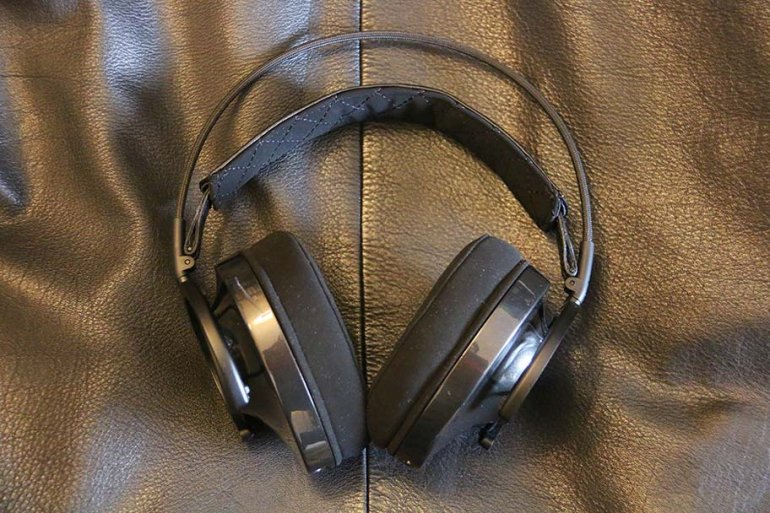
Even unzipping the case is an absolutely joyous experience. Forget the semirigid zippered bag; the cloth carry case; the utilitarian metal flight box. No, these bastards did something different. Their case for the Nighthawk Carbon is a full-size leather storage container, with the headphones and accessories nestled inside a foam pouch. Just look at the thing. Look. At. It.
That’s the box it ships in. There’s a protective cardboard slipcover, but that’s all. This is the packaging. It’s impossible not to open the case without a huge smile on your face. And we’re not talking something you throw away, either. This is a case which you will be very happy to have take up space on your shelf, even if you hardly use it (AudioQuest do include a cloth carry case, too). It’s not quite the most accessible case around - that would be the one that comes with the Nuraphones (full review here), which is just brilliant. But when a pair of headphones can make us smile before we’ve even pulled them out of the case, it’s a very good sign.
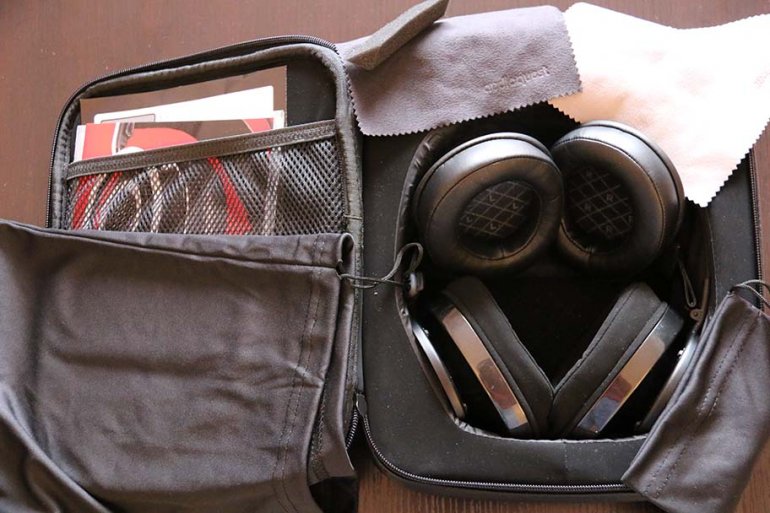
Perhaps it’s a good idea to begin with the cable. It’s not like other headphone cables. To start with, it’s thick, with a chunkiness and solidity that we really like. AudioQuest say this is to reduce ‘microphonics’ - those annoying rumbling bumps you get when touch a cable of lower manufacturing standards. Well, we bumped and knocked and touched and thump, and didn’t hear a single microphonic. Job done. At 4’3” length, the cable in question is not that much shorter than other headphone cables, but it feels shorter, perhaps due to its tendency to curl in on itself a little. And while the cable is tangle free, the smaller, thinner lines above the Y-bracket do tend to get a little twisted, which can be a bit annoying. The connector is standard 3.5mm, and it comes with a 6.3mm adapter - and if you need additional cables, the company sells plenty. It’s literally their main product line.
There was, to our surprise, an in-line control unit on the bracket. This didn’t work with our Android smartphone, but it worked just fine on an iPhone, even if you have to exert quite a lot of force to push the button.The cable connections are actually quite interesting. They are made of Tellurium Copper, which AudioQuest say results in a smoother plug surface, and therefore, higher audio quality.
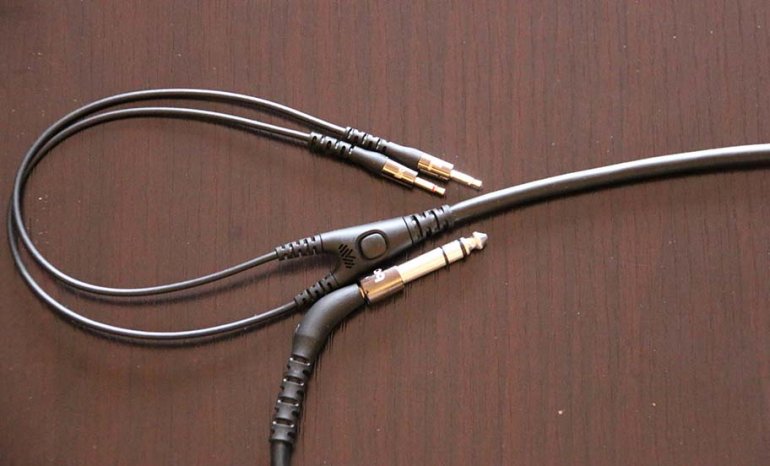
It also, unfortunately, has an interesting side effect: you need to clean the conductors quite regularly, and this is probably a good time to talk about the other accessories that come with the headphones. Put simply, if we didn’t clean the connectors once every few days with the specially-supplied silver cloth, we got slight interruptions in the signal. This wasn’t a huge issue – cleaning the connectors didn’t take much more than a few seconds – but it was a surprise. First, we thought we’d been shipped a defective unit, but cleaning the connectors showed an immediate improvement in the quality and transmission (and you can always buy a new 6.3mm adaptor - they’re super cheap). The company cautions you not to use the silver cloth on the headphones themselves, supplying a basic black microfibre cloth for this purpose, which does a good job of cleaning the liquid wood housing. In addition to that, you not only get a simple cloth carry case for the headphones (to save you having to hump around the wonderful but substantial leather box), but you also get an entirely separate one for the cable. That’s a level of dedication to accessory goodness that we don’t think we’ve seen before. There is so much here – the four ear pads, the two cloths, the multiple carry bags – that we almost want a separate carrier to hold them all in. One that isn’t made of leather and displayed proudly on our headphone shelf.
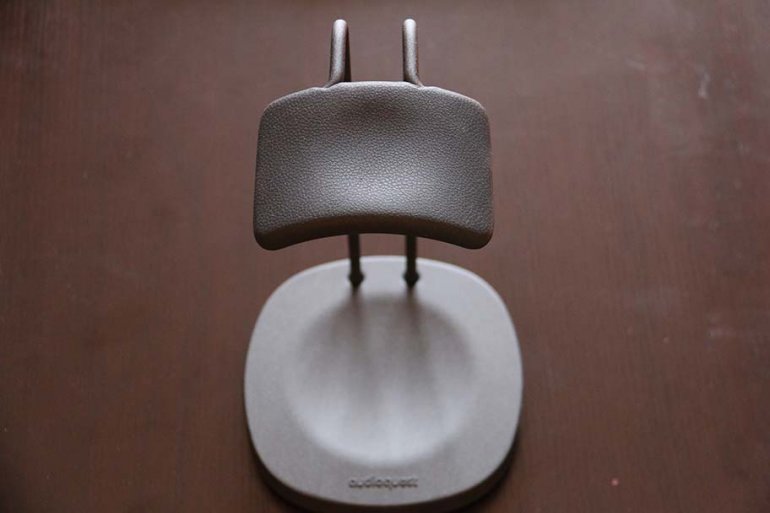
Along with the NightHawk Carbons, AudioQuest also shipped us a headphone stand, the Perch. We are never going to devote a full, three-thousand review to a simple stand (because, come on). But there’s no reason we shouldn’t talk about it here, especially since it’s designed first and foremost as a spot for you to hang your Carbons. You have to order it separately, and it costs around $80, but we think it’s worth it. Firstly, there is zero assembly required: you take the stand out the box, and put your headphones on it. Secondly, it feels like it could kill somebody if you hit them hard enough with it, which is an important factor when you’re groping around for a pair of headphones without necessarily looking to see that you aren’t about to knock your stand off the shelf. What’s interesting, however, is that the stand claims to solve a particular problem with headphones. Namely: that if you hang them in one spot for long enough, you risk deforming the headband, as all the weight is concentrated on one point. The curved bracket at the top of the Perch evenly distributes this weight, and although we’d need months and months of testing to know for sure, it seems far less likely to change the shape of the headband. If you care about your headphones, we suggest picking up a Perch as well.
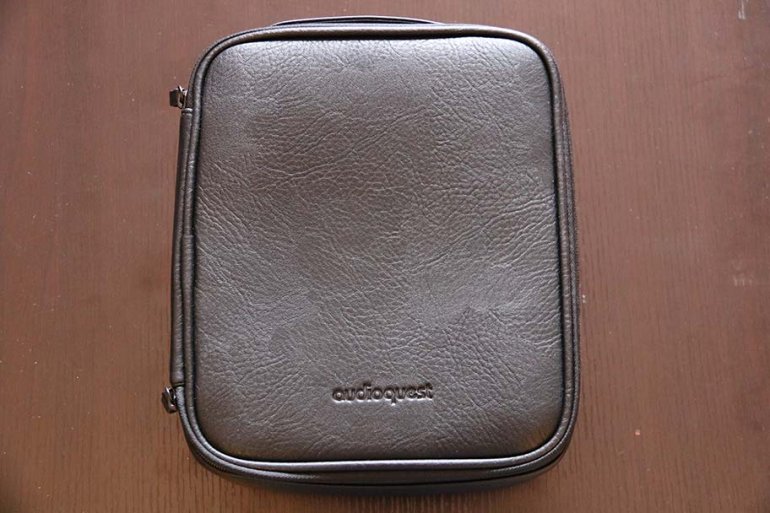
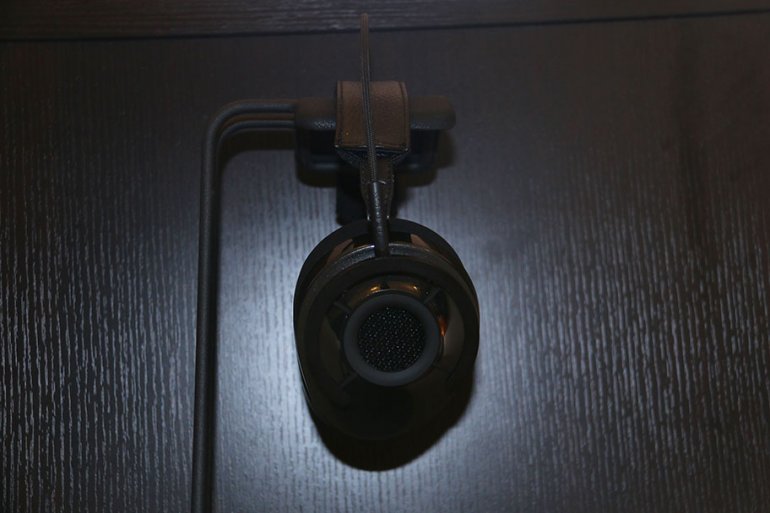
| Headphones | Price | Weight | Driver | Impedance | Cable | Sensitivity |
|---|---|---|---|---|---|---|
| AudioQuest NightHawk Carbon | $699 | 12.2oz | 50mm | 25Ω | 4'3" | 99dB |
| AudioQuest NightOwl Carbon | $699 | 12.2oz | 50mm | 25Ω | 4'3" | 99dB |
| Sennheiser HD800 | $1,090 | 11.7oz | 56mm | 300Ω | 10' | 102dB |
| MEZE 99 Classics | $309 | 9.2oz | 40mm | 32Ω | Various | 103dB |
| AUDEZE LCD2C | $799 | 1.1lbs | 106mm | 70Ω | 6'2" | 101dB |
Want Even More Master Switch? Sign Up For Our Weekly Newsletter!
Let’s start off with a real beast: the Sennheiser HD800. Usually, Sennheiser are all about the whole user-experience-designed-by-robots thing. Their headphones sound wonderful, but boy, do they look boring. The HD800 is one of the few models from this company that broke the mould there, and in doing so, it became a firm favourite of just about every audio geek on earth. The open back design and unusual, eye-catching earcups make it a serious looker, and the sound has really and truly stood the test of time. For many, this is the go-to headphone for testing out new amps or DACs, and it isn’t hard to see why. More expensive than the NightHawks, at $1090 (almost double the price) and nerdy rather than cool, but well worth the money.
Looking for something cheaper? The MEZE 99 Classics don’t offer quite the same level of audio quality as the NightHawks. And yet, in the months we’ve spent with them, we can’t help but find the sound addictive. They might not have the same clarity, but they have a richness and depth that makes them a serious alternative – and a cheaper one, at $309 to the NightHawks’ $568. You sacrifice the groundbreaking driver structure and design, and you don’t get the same airiness and clarity – these are closed-back, dynamic driver cans, with all that implies. But they are absolutely gorgeous, supremely comfortable, and a pair of headphones that you just have to experience. If you don’t have the budget to stretch to a pair of NightHawk Carbons, give Romania’s Greatest Export a go.
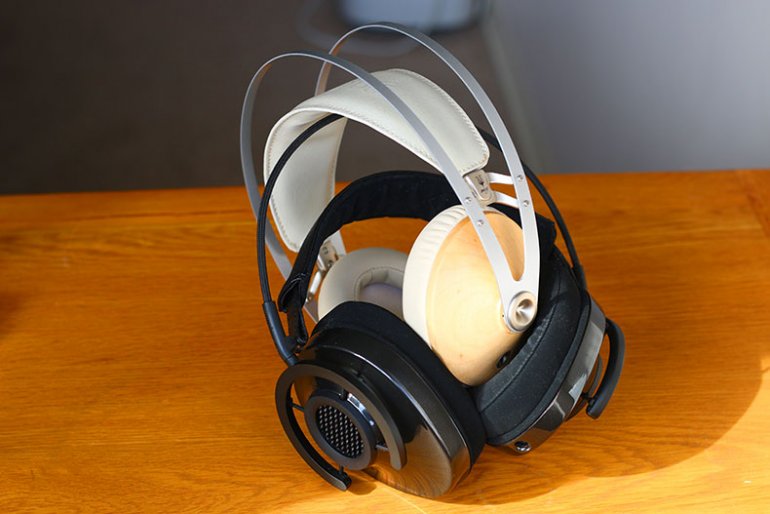
A newer pair that we recently tested, and which compare well to the NightHawks, are the AUDEZE LCD2Cs. They are similarly dark and bassy, but with even higher-quality sound - not surprising, as they’re a direct descendant of the original LCD-2s (yes, the hyphen is there deliberately). AudioQuest have them beaten, in terms of accessories, but they’re still excellent headphones.
And finally: the AudioQuest NightOwl Carbon Well, why not? After all, when you've got a pair of headphones this unique, the easiest comparison is a model that looks just like it, and that has the same devotion to groundbreaking science. The NightOwl doesn’t have the sound-diffusing grille (obviously), and it doesn’t have the same open, airy quality to the audio, but it still packs a huge amount of scientific innovation inside it, and is still an absolute joy to use. You’d go for this pair of headphones if you wanted the AudioQuest experience, but needed to use the headphones in an environment where audio bleed could be a problem, such as an office. The differences between the two models are minimal, outside of the fact that the NightOwl is closed-back, and they cost roughly the same, so making the choice is an easy one.
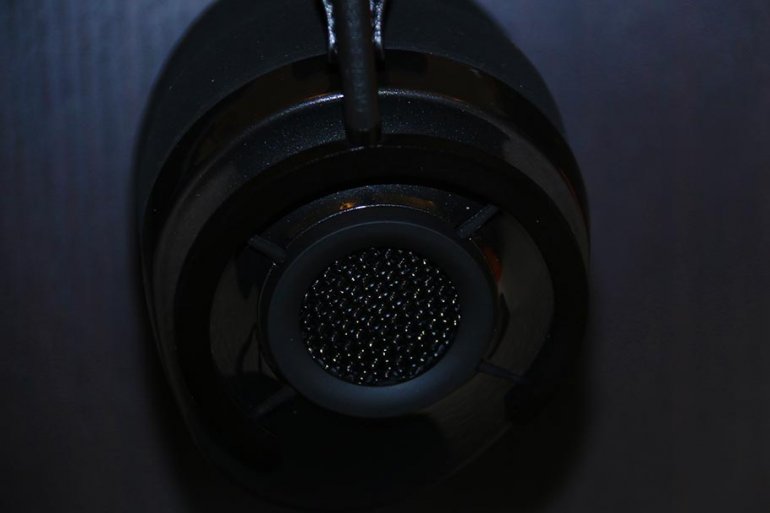
Here’s the kicker - when it comes to AudioQuest anyway. There are plenty of companies that make high-end headphones. And there are plenty of headphone models that are, objectively, better than the NightHawk Carbons. But do you want to know the difference between those models and these? Headphones from your big manufacturers – your Sonys, your Beyerdynamics, even your Audezes – often feel like they’ve been designed and packaged by robots. They do a phenomenal job, but they don’t seem particularly concerned with how they make you feel. Whatever engineers labored over the audio signature in the lab, making it just right, the packaging and user experience was handled by Bob from management, who drives a 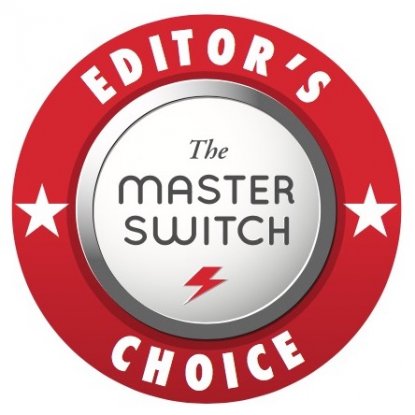
Volvo and enjoys comparing snow blowers.
That’s the difference with these headphones. They feel like they were made by human beings: by people who care very deeply not just about the sound going into your ears, but the entire experience, from the moment you open up the packaging to when you hang the headphones back on the stand. They feel like they’ve been designed by people who enjoy what they do, and who want you to enjoy it, too. They’ve been made with care, and pride, and devotion. How many headphones can you say that about? Up until recently, only companies like Grado really nailed it. And their down-home, folksy Brooklyn family business charm is great…but somehow, we prefer these. And let’s be real: we didn’t just spend damn-near 3000 words of orgasmic, overblown prose to give the NightHawk Carbons nothing more than a perky thumbs-up. These get fireworks. These get the ticker tape parade. These get the goddamn key to the city, and a blowjob in the back of the limo.